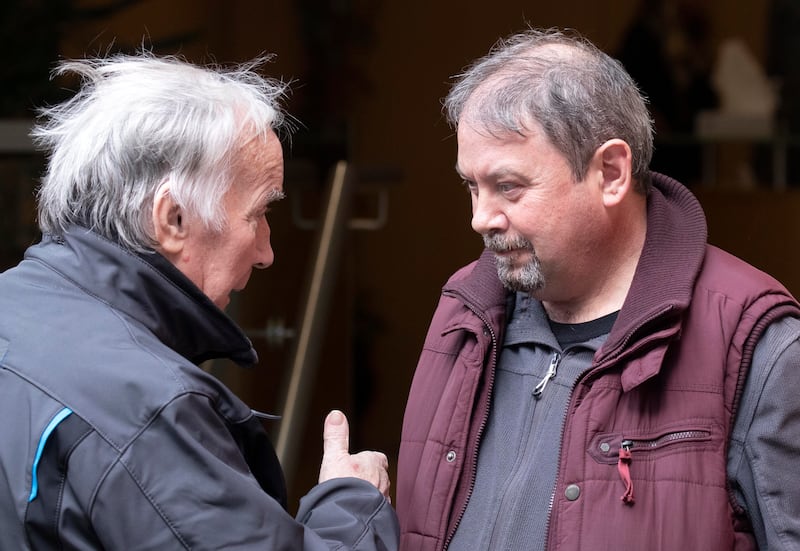An inquest has heard that there was “a blast of oil and smoke” from a motorcycle ridden by the well-known Northern Ireland sportsman William Dunlop just before he was involved in a fatal collision during a race in north Dublin five years ago.
Mr Dunlop was killed in the crash, which occurred during a practice run for the Skerries 100 races on July 7th, 2018.
The 33-year-old father of two from Ballymoney, Co Antrim was a son of another leading rider, the late Robert Dunlop, who was killed in a racing crash in the North West 200 in 2008, and a nephew of the sport’s legendary figure, Joey Dunlop, who was fatally injured in a collision during a race in Estonia in 2000.
The deceased had been competing in the annual races as a member of the Lisburn-based Mar-Train racing team owned by Tim and Sonia Martin.
RM Block
A marshal on the course, Brian Howard, told the inquest he heard the distinctive approach of Mr Dunlop’s Yamaha R1 superbike at around 4.45pm and saw it “bottom out” when its belly pan – the lowest part of the vehicle’s frame which is designed to collect any leaking material such as oil – hit the road surface on a small hill on the course.
Mr Howard said he immediately declared a red flag to stop the racing due to the resulting oil spillage on the track.
The marshal said he ran up the road after the rider but could not see anything because of the smoke.
Mr Howard said he heard another marshal call for medics to attend the scene a short time later.
Questioned by counsel for Mar-Train, Damien Crawford BL, he said Mr Dunlop’s bike, which he estimated was travelling at up to 170mph at the time, had a “heavy impact” with the road.
A photographer who was also an eyewitness to the crash, John Burke, recalled seeing “an explosion of green leaves”.
“I knew straight away it was a fatal accident,” said Mr Burke.
He recounted how the motorcycle had ended up sliding around 30 yards further down the track than Mr Dunlop.

Another marshal, Thomas Garry, told the inquest he was surprised to learn later that a plug he found on a bank around 200 metres away from Mr Dunlop’s motorcycle was from the vehicle.
Mr Garry described the piece of equipment – which is used to plug the oil sump that is covered by the belly pan – as appearing “ten years old and shattered-looking”.
Mar-Train lead mechanic Alistair Russell told the inquest that he was “100 per cent sure” that there had been no damage to the motorcycle before Mr Dunlop had started the practice run.
Mr Russell said Mr Dunlop was a rider “with masses of experience” who would have remarked if his motorcycle had “bottomed out” during an earlier run on the day, as it would need to have been checked.
The mechanic said he had been shown a photo of a hole in the bike’s belly pan taken after the collision, which the inquest heard would have caused oil to come in contact with the rear wheel of the vehicle.
“100 per cent William Dunlop would not take this bike out for the last time in this condition,” said Mr Russell.
Questioned by counsel for the Dunlop family, Ben O’Connor BL, Mr Russell accepted that different-sized sump plugs would have been used on the motorcycle over time. He also acknowledged that a larger sump plug would have been closer to the ground than other plugs.
A scrutineer for the Skerries 100 organisers, Declan O’Reilly, also confirmed that he had found no issue with Mr Dunlop’s bike during an inspection at the start of the day.
The inquest was attended by Mr Dunlop’s partner, Janine Brolly, and his brother, Michael, who had also been competing in the Skerries 100 races on the same day.
The coroner, Cróna Gallagher, said a postmortem had shown Mr Dunlop had died as a result of traumatic head injuries and a fracture to the top of his spine, which she said were “un-survivable”.
The president of MotorCycling Ireland, Seán Bissett, said the sports body had approved the course for the Skerries 100 races and had issued a licence to the Loughshinny Motor Club to stage the event.
The inquest heard that the annual race had been operating since 1946. Mr Bissett said it had essentially been the same course for several years with slight modifications made to improve safety.
He said the 2.2-mile track had been inspected six weeks in advance of the race to ensure there were no issues with the road surface.
In reply to questions by Mr O’Connor, Mr Bissett said it was not common for motorcycles to “bottom out” during races.
The inquest before a jury of six women and one man will resume on Friday.
Media reports following the fatal crash suggested Mr Dunlop was ready to retire from the sport at the end of the 2018 racing season. The deceased’s youngest daughter Willa was born two months after her father’s death.


















